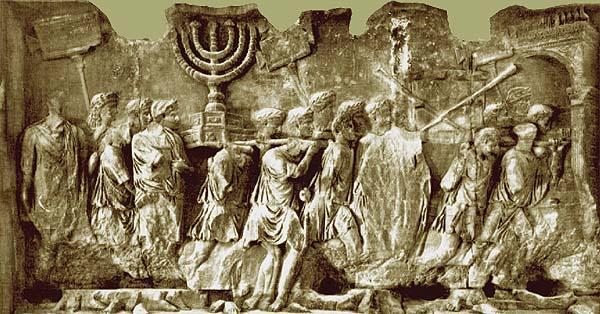This Translation
This translation of Josephus was made between 2001 and 2010. When I began it, the only English version of Josephus' writings available gratis on the Internet was the one made in the eighteenth century, by William Whiston (1667-1752), entitled The Works of Flavius Josephus (1737). Believing that not only my own students, but possibly others would avail of a more readable version online, I set out to make one, based on the Greek of Niese's editio major, as found in Loeb's edition of Josephus (Harvard, 1934ff.) Whiston's 18th century rendering Josephus, while accurate enough, is in a quaint, old-fashioned English, due to its echoing the vocabulary of the King James Bible, and to its rather strict adherence to the word-order and syntax of the Greek original. This updated version aims at a more modern idiom, without neglecting concern for accuracy.
The paragraph numbers used by Whiston and the verse numbers devised by Benedikt Niese are both included here. While basing myself on the Greek text, I have kept an eye on Whiston's rendering throughout, as well as on the 1940's version in the Loeb edition, when seeking felicitous equivalents to particular phrases.
Numbering System for the works of Josephus |
|
The division of the works of Josephus into chapters is very ancient, and is reflected in citations by Cassiodorus. The sub-division of each chapter into numbered paragraphs goes back at least as far as Whiston's 18th century translation, and may well precede him. References to texts in Josephus are commonly cited in one of two styles: |
|
1) By book, chapter and paragraph [e.g. Ant. 2.6.9] . [The main difficulty with this older form of citation is that the numbered paragraphs vary greatly in length, from five to more than a hundred lines. In the War, for example, a single paragraph can contain a lengthy speech, running to several pages! ] |
|
2) By book and verse [e.g. Ant.
2.160]. [Here, each verse, rather like a biblical verse,
is just a few lines of text, seldom more than two sentences long;
each book consists of hundreds of these verses, numbered sequentially.
This useful system of subdividing the Greek text into these shorter
verses, for the more precise location of particular passages in the
text, appears to have been introduced by Benedikt Niese in his critical
edition: Flavii Josephi Opera. 7 vols (editio major). Berlin:
Weidmann, 1885-1895. Some very long paragraphs consist of numerous
verses, only the first of which is indexed here. For an example, see
Agrippa's speech, in War 2:345-401] |
|
Both numbering styles are incorporated in this edition: |
|
Style 1) books and chapters are indexed in the Table of Contents [the paragraph numbers, as enumerated in Whiston, are listed in plain text only, and not indexed in any way, in order to avoid confusing them with the far more numerous verse-numbers] |
|
Style 2) the verse-numbers are also kept within the text, for easy reference. Any desired verse can be easily reached using the Search-key: Ctrl-F |
It is hoped that this new version may help today's students of Second Temple Jewish history to sample the vitality and creativity, as well as the religious and historical vision of the extraordinary first century recorder, Flavius Josephus.

